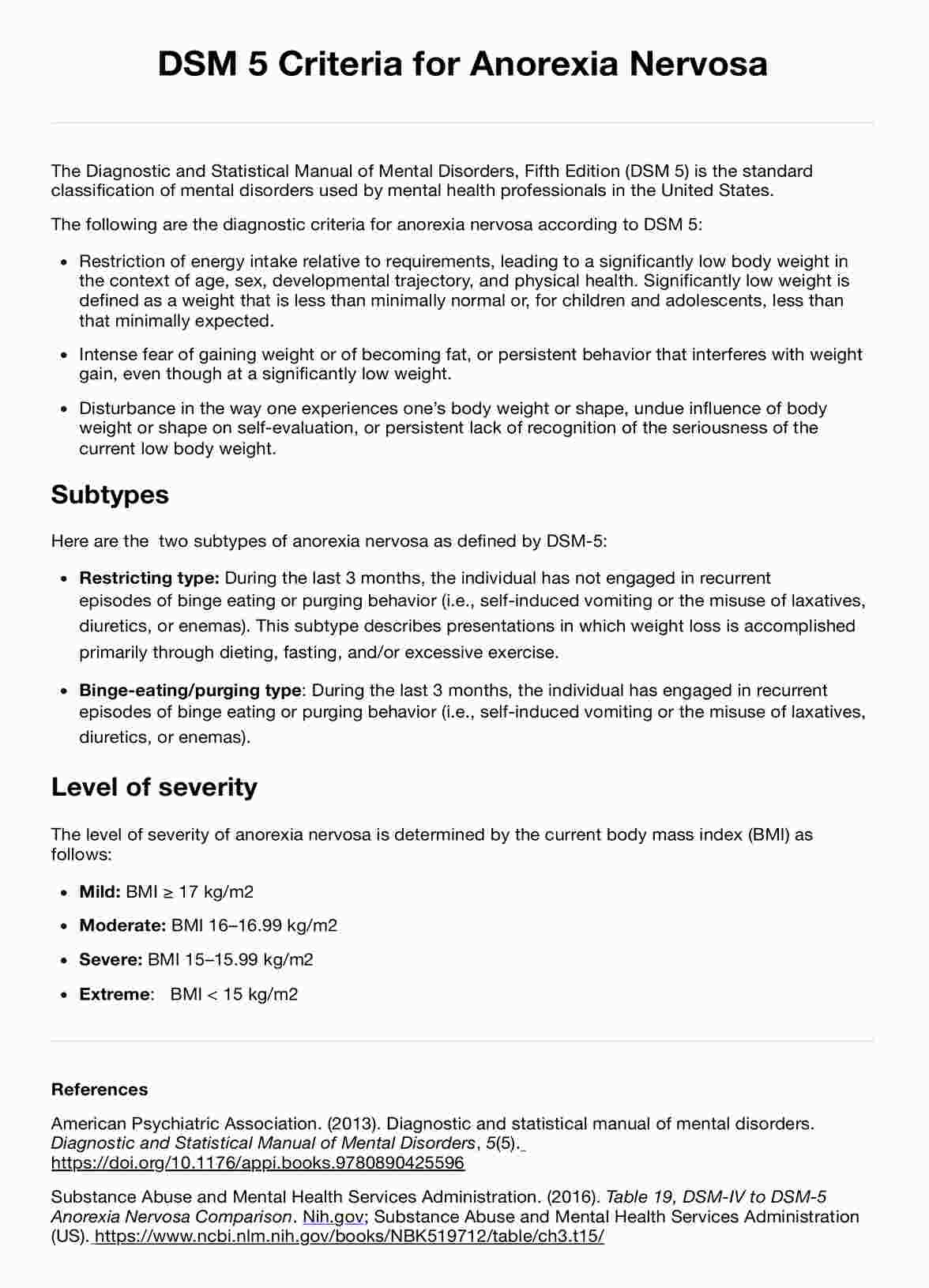Atypical anorexia nervosa shares many behaviors and psychological symptoms with classic anorexia nervosa, such as an intense fear of gaining weight and body image distortion. However, individuals with atypical anorexia nervosa do not meet the low weight criteria but still experience significant health complications and distress related to their eating disorder.

DSM 5 Criteria for Anorexia Nervosa
Learn the DSM 5 criteria for Anorexia Nervosa, including diagnostic features and characteristic symptoms. Get a free PDF download for your reference.
DSM 5 Criteria for Anorexia Nervosa Template
Commonly asked questions
Self-induced vomiting is often associated with bulimia nervosa, a severe eating disorder characterized by binge eating followed by behaviors to avoid weight gain, such as self-induced vomiting. This behavior can also occur in individuals with anorexia nervosa as a method to control weight despite its severe health consequences.
While anorexia nervosa and binge eating disorder are typically viewed as distinct conditions, it's possible for an individual to exhibit behaviors of both disorders, although this is less common. This complex presentation requires careful assessment and a tailored treatment approach to address the spectrum of eating behaviors.
EHR and practice management software
Get started for free
*No credit card required
Free
$0/usd
Unlimited clients
Telehealth
1GB of storage
Client portal text
Automated billing and online payments











